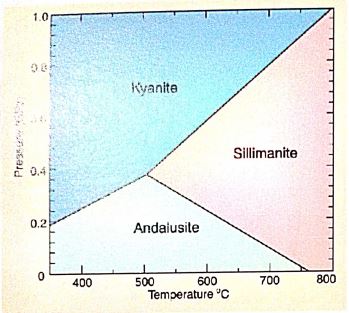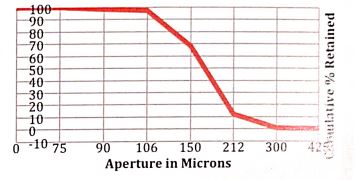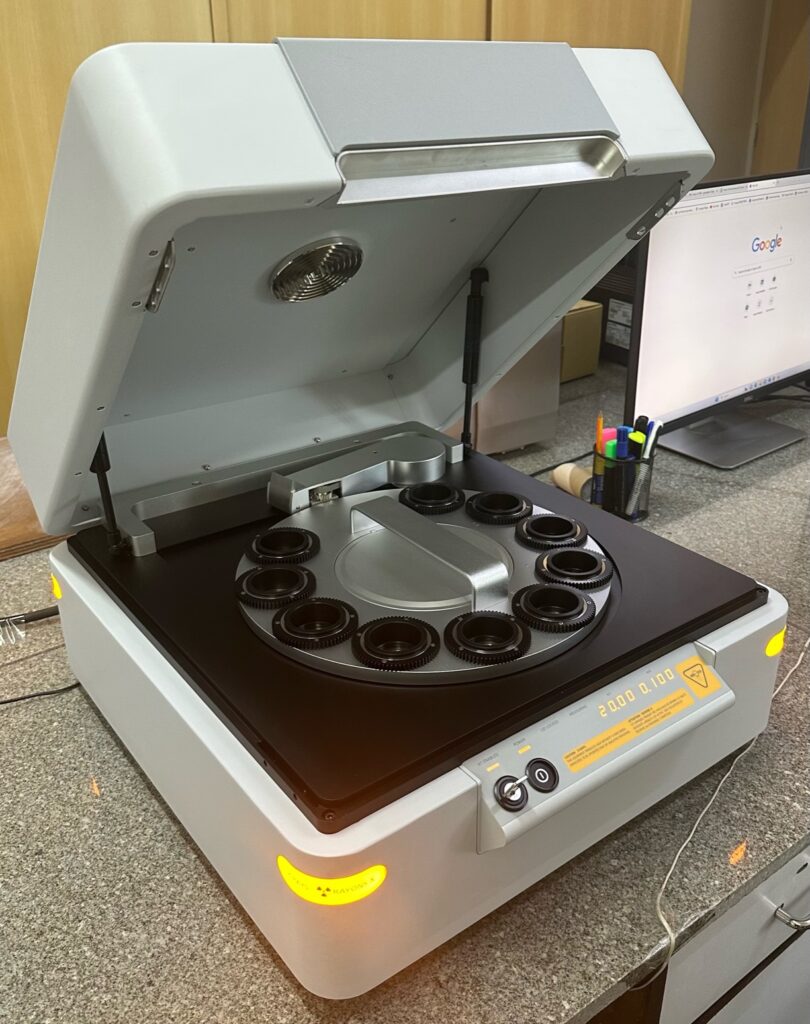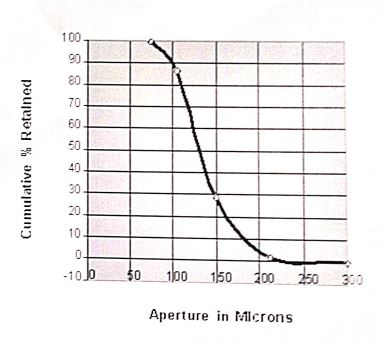— Welcome, Ruby Ceramics
SILLIMANITE
Ruby Ceramics Pvt Ltd. provides sillimanite sand and milled sillimanite products that can be used as a refractory without calcination since it exhibits very little expansion.
Mineral Phases in AI2Si05 System:

Sillimanite is very stable and does not change into Nullite 0 until the temperature reaches 15450C. Here the volume expansion is only 4% in case of sillimanite sand. Ruby Ceramics provides milled sillimanite where the 100 – 200 mesh product shows an expansion of>2% at 15450C
Chemical Analysis of Sillimanite sand (WI % by XRF)
| Element | Typical | Guaranteed |
| AI2O3 | 56.60 +- 0.5 | > 56.50 |
| SfO2 | 38.0 | - |
| ZrO2 | 2.20 | - |
| Fe2O3 | 0.40 | - |
| TiO2 | 0.25 | - |
Typical Particle Size Distribution of sillimanite Sand
| Aperture μM | Retained (Wt %) | cumulative (Wt %) |
| 425 | Nill | – |
| 300 | 0.7 | 0.70 |
| 212 | 11.3 | 12 |
| 150 | 55.8 | 67.80 |
| 106 | 29.6 | 97.40 |
| 90 | 0.90 | 98.30 |
| 75 | 1.50 | 99.80 |
| -75 | 0.20 | 100 |

Typical Physical Properties
| Element | Typical |
| Bulk Density | 1.95 – 2.05 g/cm3 |
| Specific Gravity | 3.2 g/cc |
| Decomposition | 1550 oC – 1650 oC |
| Belting Point | 1810 oC |
| Hardness (Mohs) | 6.0-7.5 |
| pH | 5.S – 7.0 |
Chemical Analysis (Wt% by XRF) and Physical Characteristics of Milled Sillimanite Products
| Characteristic Chemical Analysis (Wt% by XRF) | 100 Mesh Typical | 200 Mesh Typical |
| AI2O3 | 56.50 +- 0.5 | 56.50 +- 0.5 |
| SiO2 | 38 +- 0.5 | 38 +- 0.5 |
| Fe2O3 | 0.40 +- 0.10 | 0.40 +- 0.10 |
| TiO2 | 0.25 +- 0.05 | 0.25 +- 0.05 |
| Bulk Density (Uncompacted) kg/m3 | 860 | 1140 |
| Wt.% retained on 100 mesh +149p | 0-3 | Traces |
| Wt.% retained on 200 mesh +75p | 05-15 | >3 |
| Wt.% retained on 300 mesh +53p | 10-20 | >9 |
Uses Of Zircon
Ruby Ceramics Pvt Ltd. provides zircon sand and milled zircon sand products made from naturally occurring rounded grain sands mined from heavy mineral deposits in Australian and Indian. The zircon sand and milled products are of high quality, and are calcined to reduce volatile content. The miliing of Zircon is carried out in sophisticated machinery to obtain contamination free and closely controlled particle size products.
| Industry | Application | Features |
| Foundry | Sand mold and cores | Excellent casting surface |
| Metal chills | Resists metal penetration and “burn in” Low thermal expansion aids dimensional accuracy Resists metal reaction with most alloys Reduced cleaning and machining Low binder requirements High thermal conductivity High bulk density | |
| Precision Investment Casting | Prime coat slurry (flour form) | Excellent casting surface |
| Back-up slurry and stucco | Low reactivity with most alloys | |
| Cores | Exhibits nonwetting surface to molten metals | |
| Shell molds | Low thermal expansion Excellent refractory properties Dimensional accuracy | |
| Refractory | Ladle brick | Reduces erosion |
| Coatings, mortars, and linings | Extends ladle lining life | |
| Ladle nozzle fill | Resists reaction with molten metal and slag Excellent refractory properties for higher temperature alloys Reduces refractory inclusions in high-performance steel Reduced spalling due to low thermal expansion Longer life High bulk density High thermal conductivity Clean flow on release of slide gate | |
| Ceramic | Glazes | Improves opacity |
| Sanitary ware | Increases craze resistance | |
| Wall tile Dinnerware Electrical porcelain Glazed brick and industrial tile Artwork | Glaze texture control | |
| Other | ||
| • Glass | High performance refractory | Reduced erosion Longer glass tank life |
| • Welding Rod | Special weld rod coatings | With other mineral ingredients, forms slag to shield weld pool |
| • Zirconium Metal | Source of zirconium element | High zirconium content |
Get into touch we will contact soon
Thermal Expansion Coefficients of Mineral Sands

Typical Particle Size Distribution of Zircon Sand
| Aperture(μm) | Retained (Wt %) | Cumulative (Wt %) |
| 300 | 0.05 | 0.05 |
| 212 | 1.71 | 1.76 |
| 150 | 26.88 | 28.64 |
| 106 | 57.84 | 86.48 |
| 75 | 13.27 | 99.75 |
| -75 | 0.25 | 100 |
Chemical Analysis (Wt % by XRF)
| Element | Typical | Guaranteed | |
| Premium | Standard | ||
| ZrO2+ HfO2 | 66.5 | 65.5 | > 65 |
| SiO2 | 32 | 33.0 | – |
| AI2O3 | 0.50 | 0.7 – 1.3 | – |
| Fe2O3 | 0.05 | 0.10 | < 0.15 |
| TiO2 | 0.15 | 0.19 – 0.23 | < 0.25 |
| CaO | 0.02 | 0.04 | – |
| CR2O3 | 0.01 | 0.01 | – |
| NnO | 0.02 | 0.02 | – |
| P2O5 | 0.04 | 0.08 | – |
| V2O5 | 0.02 | 0.03 | – |
| FF9E Silica | < 0.05 | < 1.0 | – |
| U + Th | 310 – 410 ppm | 310 – 410 ppm | < 500 ppm |
| Th | 130 – 180 ppm | 130 – 180 ppm | – |
| Specific Activity | 0.5- 0.7 BQ/g | 0.5- 0.7 BQ/g | |
| U | 180 – 230 ppm | – | |
| Specific Activity | 2.2 – 2.9 Bq/g | ||



Typical Physical Properties
| Element | typical |
| Bulk Density | 2.7 g/cm3 |
| Specific Gravity | 4.6 g/cm3 |
| Melting Point | 2,200’C |
| Hardness (Mohs) | 7.0 – 7.5 |
| Coefficient of Linear Expansion | 7.2 X 10-6 cm/on.oC (4.0xl0-6 in/in.oF) |
| pH | 5.5 – 7.0 |
